What you see in this photo is a reconstruction of the oldest pyramid in the world, and it is located Gunung Padang, Indonesia. Today the mound is full of trees, vegetation and soil, so it is not completely visible to the naked eye. But if it were completely cleared, it would appear as in the photo. The latest research, as you can see in the photo below, suggests that there are three empty chambers under the pyramid. No one has yet managed to penetrate inside.
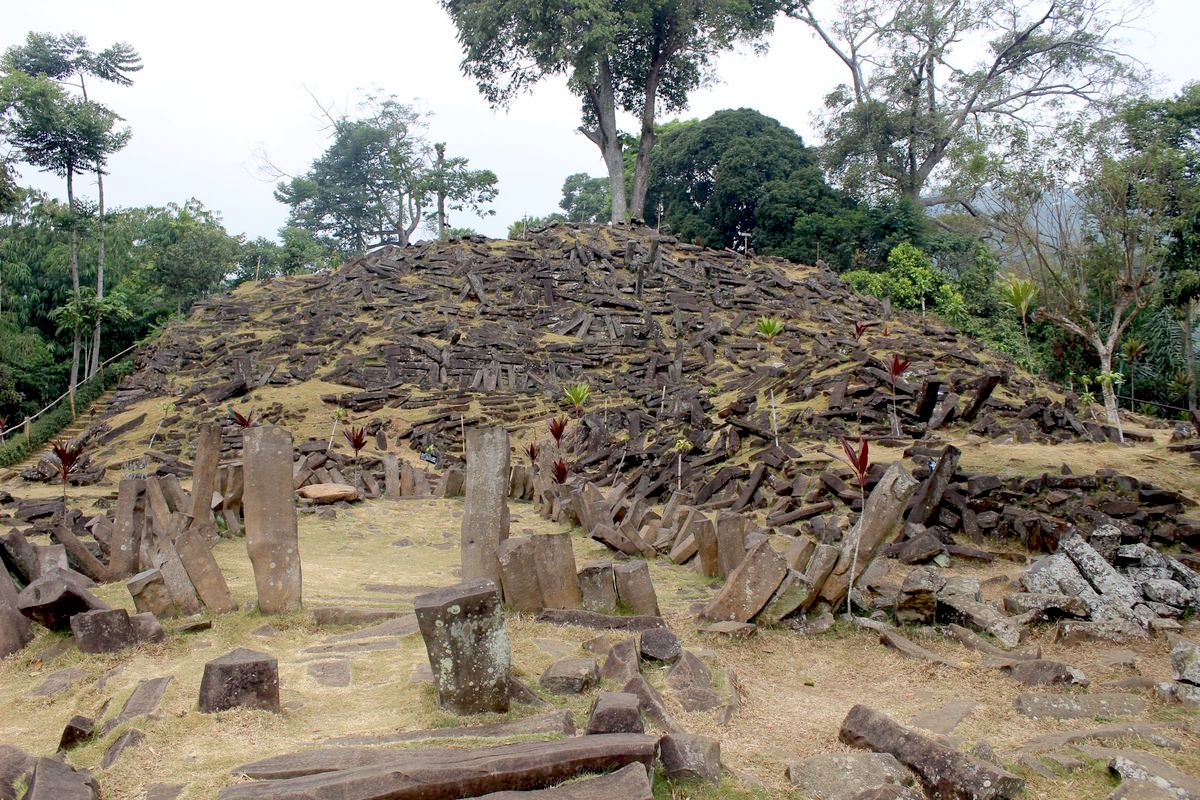
Gunung Padang is a megalithic site located in the West Java Province of Indonesia, 30 kilometers (19 mi) southwest of the city of Cianjur or 6 kilometers (3.7 mi) from Lampegan station, more precisely in the Karyamukti village.
It’s highly possible that once surfaced, the complex could be the largest megalithic site in all of Southeastern Asia and has produced controversial carbon dating results which, if confirmed, would suggest that construction began as far back as 20,000 BCE.
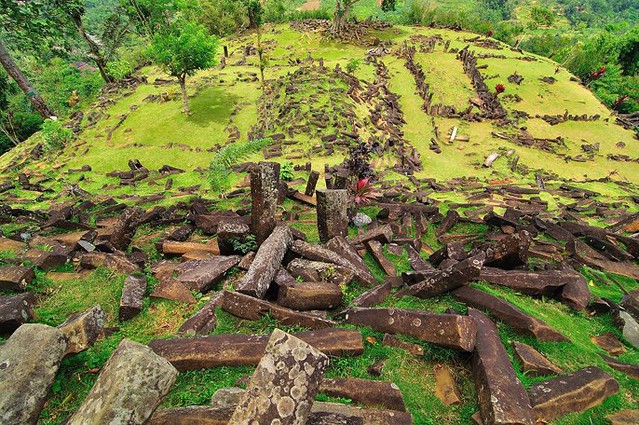
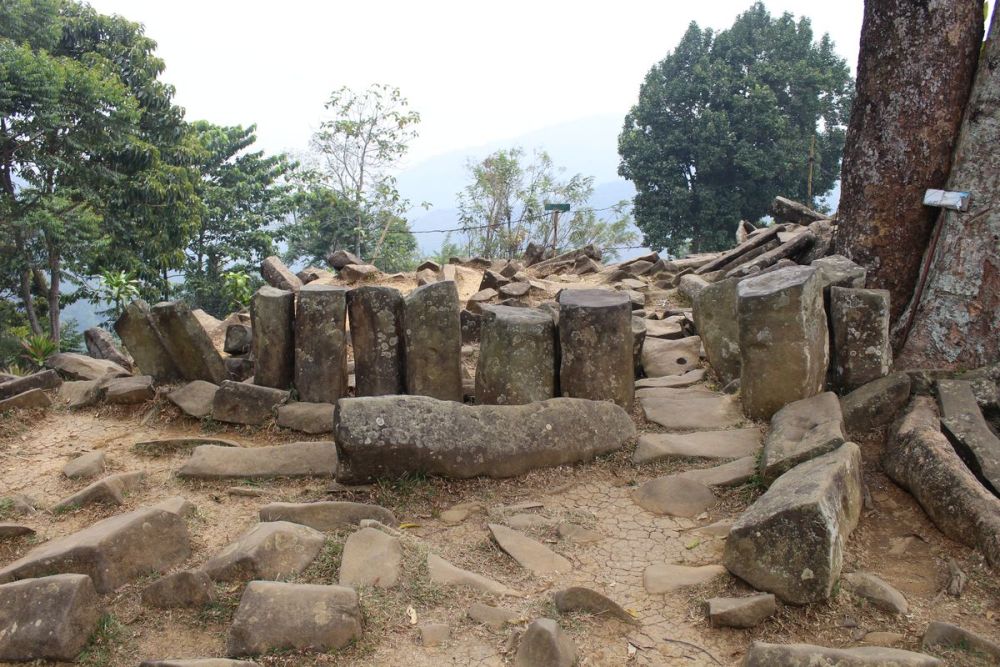
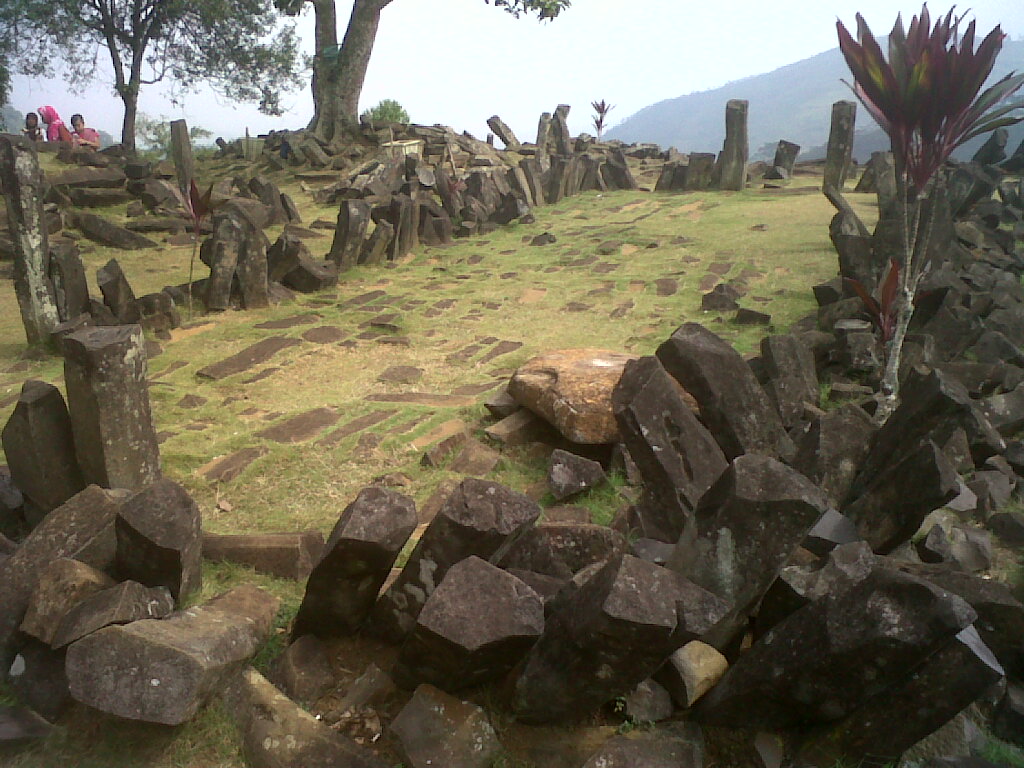
Located at 885 meters (2,904 ft) above sea level, the site covers a hill in a series of terraces bordered by retaining walls of stone that are accessed by about 400 successive andesite steps rising about 95 meters (312 ft).
It is covered with massive rectangular stones of volcanic origin.
The Sundanese people consider the site sacred and believe it was the result of King Siliwangi’s attempt to build a palace in one night.
The asymmetric step pyramid faces northwest, to Mount Gede.
Although there isn’t much information about the site, archeologists maintain that it was most likely constructed for the purpose of worship.
Thus far, archaeologists have been able to enlist some of the features of Gunung Padang, concluding that a very large structure lies below the surface. Many man-made artifacts were found in situ, indicating that the construction of the site spans through four eras.
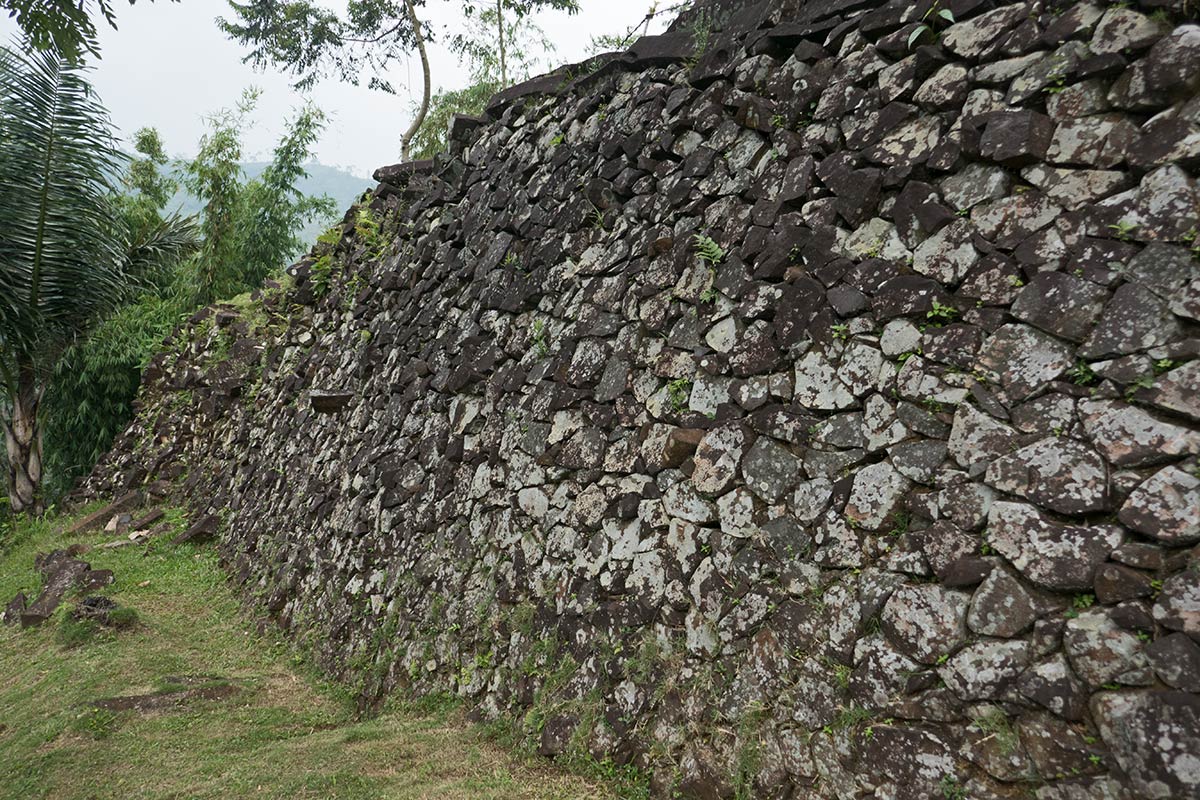

The retaining walls on the sides of the Pyramid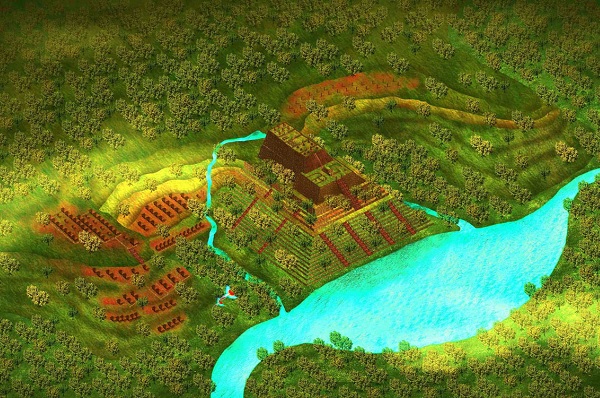 Digital reconstruction of how the original building might have looked like
Digital reconstruction of how the original building might have looked like

The researchers also concluded that around 10.000 years ago, or possibly 20.000, the modification of the hill began to take place and that around 9.000 years ago the construction of the actual pyramid began by initially erecting the andesite columns surrounding it.
Over the years, the pyramid was continually modified and built upon, adding more layers, a practice that found in many other megalithic sites.
Based on geoelectric, georadar, and geomagnetic testing, a construction with incredibly large chambers was detected at more than 15 meters, or 49 ft, below the surface.
Unlike the south side with its 5 stone terraces, the east side has 100 stone terraces with a width and height of 2 by 2 meters (6 ft 7 in × 6 ft 7 in).
The west side also has stone terraces but is still covered by soil and bush, and the north side has a 1.5 meter-wide staircase, as well as terraces with wall sides very similar to those of Macchu Picchu in Perù.
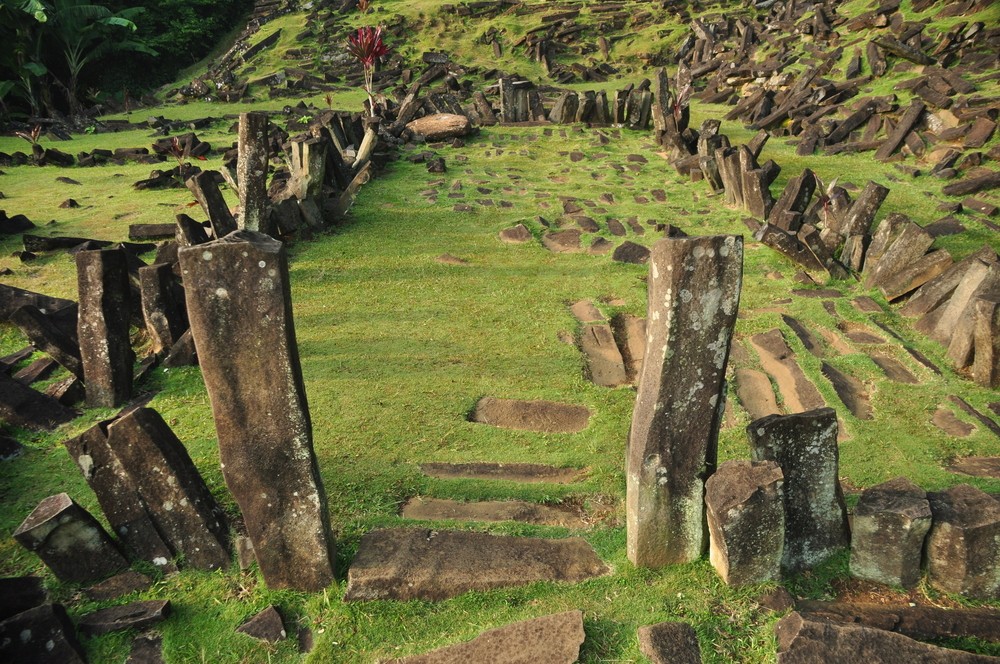
The Research
In the controversial research presented at the AGU 2018 Fall Meeting in Washington, DC, a team of Indonesian scientists presented data to show that Gunung Padang is actually the site of the oldest known pyramid structure in the world.
“Our studies show that the structure not only covers the upper part but also envelops the areas that cover at least an area of about 15 hectares, the structures are not alone superficial but deeply rooted”, the authors wrote in the abstract of their new paper.
Using a combination of sensing methods, including ground penetration radar (GPR), seismic tomography, and archaeological excavation, the team says Gunung Padang is not just an artificial structure, but a series of different layers built over consecutive prehistoric periods.
The uppermost, megalithic layer, consisting of rock columns, walls, paths, and spaces, sits above a second layer about 1-3 meters below the surface.
The researchers suggest that this second layer would have previously been mistaken for a natural rock formation, but in reality, it is another series of columnar rocks organized in a matrix structure.
Below this, the third layer of rocks containing large underground cavities extends up to 15 meters deep and is found on the lowest (fourth) layer, made of basaltic rock, somehow modified or carved by human hands.
According to the researchers, preliminary radiocarbon dating suggests that the first layer could be around 3,500 years ago, the second layer around 8,000 years ago, and the third layer between 9,500 and even 28,000 years ago.
Regarding the purpose of these ancient and vast structures, the researchers, led by geophysicist Danny Hilman Natawidjaja of the Indonesian Institute of Sciences, suggest that the ancient pyramid could have had a religious use.
“People think the prehistoric era is primitive, but this monument proves what we think is wrong”, Natawidjaja told the Sydney Morning Herald in 2013.
The findings were presented at the American Geophysical Union’s annual meeting in Washington DC in 2018.